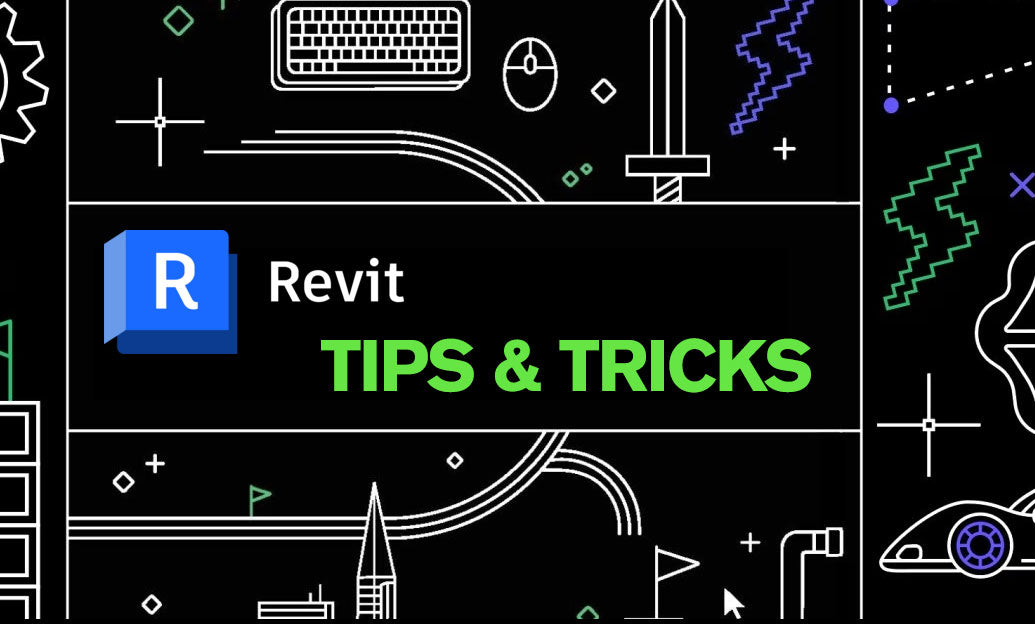Your Cart is Empty
Customer Testimonials
-
"Great customer service. The folks at Novedge were super helpful in navigating a somewhat complicated order including software upgrades and serial numbers in various stages of inactivity. They were friendly and helpful throughout the process.."
Ruben Ruckmark
"Quick & very helpful. We have been using Novedge for years and are very happy with their quick service when we need to make a purchase and excellent support resolving any issues."
Will Woodson
"Scott is the best. He reminds me about subscriptions dates, guides me in the correct direction for updates. He always responds promptly to me. He is literally the reason I continue to work with Novedge and will do so in the future."
Edward Mchugh
"Calvin Lok is “the man”. After my purchase of Sketchup 2021, he called me and provided step-by-step instructions to ease me through difficulties I was having with the setup of my new software."
Mike Borzage
Harnessing Interactive Dashboards for Enhanced Design Project Management
January 27, 2025 7 min read


Introduction to Interactive Dashboards in Design Project Management
In the dynamic realm of design project management, the integration of technology has revolutionized the way projects are monitored and controlled. One of the most significant advancements is the introduction of interactive dashboards. These are sophisticated tools that allow project managers and team members to visualize and interact with data in real-time. An interactive dashboard is a user interface that organizes and presents information in a way that is easy to read and interpret. It provides a consolidated view of key performance indicators (KPIs), metrics, and essential data points relevant to a project's objectives. By transforming raw data into actionable insights through graphical representations, interactive dashboards play a pivotal role in tracking and managing design projects efficiently.
The purpose of interactive dashboards extends beyond mere data presentation. They serve as a central hub where all project-related information converges, facilitating informed decision-making. In the fast-paced environment of design projects, where timelines are tight and resources are limited, having immediate access to critical data is invaluable. Interactive dashboards empower teams to monitor progress, identify potential issues early, and adjust strategies proactively. They enhance transparency within the project, ensuring that all stakeholders are aligned and informed about the current state of affairs. This level of visibility is crucial for maintaining momentum and achieving project milestones.
Monitoring progress is essential to ensure that design projects stay on schedule and within budget. Delays or cost overruns can have significant repercussions, affecting both the project's success and the organization's reputation. Interactive dashboards provide a real-time snapshot of where the project stands, highlighting areas that require attention. By facilitating transparency and accountability among team members, they promote a culture of responsibility. Team members can see how their contributions impact the overall project, fostering collaboration and a shared commitment to success. The ability to track progress meticulously helps in maintaining control over the project’s trajectory, reducing the likelihood of surprises and enabling timely interventions.
The evolution of project management tools has seen a transition from traditional methods to digital solutions. Initially, project tracking was manual, relying on spreadsheets, meetings, and static reports that were time-consuming and often outdated by the time they were reviewed. The rise of real-time data visualization has transformed this landscape. Digital tools now offer dynamic, up-to-the-minute information accessible from anywhere, which is especially beneficial in an increasingly remote and distributed workforce. Interactive dashboards encapsulate this evolution by providing a platform that combines data integration, visualization, and user interaction. They embody the shift towards leveraging technology to enhance efficiency, accuracy, and collaboration in project management.
Benefits of Using Interactive Dashboards for Design Projects
The adoption of interactive dashboards in design projects brings numerous benefits that significantly enhance the way teams operate. One of the most notable advantages is real-time data visualization. With immediate access to project metrics and status updates, teams can stay informed about every aspect of the project as it unfolds. This real-time visibility is crucial for identifying potential issues promptly, such as resource bottlenecks, scope creep, or schedule delays. By detecting these challenges early, teams can implement corrective measures before they escalate, thereby maintaining project integrity and momentum.
Another significant benefit is improved collaboration and communication. Interactive dashboards act as a centralized repository of information that is accessible to all stakeholders, regardless of their location. This centralization ensures that everyone is working with the same data, reducing misunderstandings and misalignments. By providing shared insights and reports, dashboards streamline communication, making it more efficient and effective. Team members can discuss specific data points, projections, and results directly, fostering a collaborative environment where information flows freely and decisions are made collectively.
Interactive dashboards also enhance decision-making by providing data-driven insights that support strategic choices. Instead of relying on intuition or incomplete information, project managers and stakeholders can base their decisions on accurate and current data. This approach increases confidence in the decisions made and can lead to better project outcomes. The ability to forecast project outcomes and adjust plans accordingly is invaluable, especially in complex design projects where variables can change rapidly. By anticipating future trends and potential obstacles, teams can adapt their strategies proactively.
In terms of efficiency and productivity, interactive dashboards contribute significantly by automating data aggregation. This automation reduces the need for manual reporting tasks, which are often time-consuming and prone to error. By eliminating these tasks, team members can focus their attention on critical aspects of the project that require their expertise and creativity. This shift not only enhances productivity but also increases job satisfaction, as team members can engage more deeply with meaningful work. The streamlined processes facilitated by dashboards lead to quicker turnaround times and the ability to handle larger, more complex projects effectively.
Key Features of Effective Interactive Dashboards
An effective interactive dashboard is distinguished by several key features that enhance its functionality and user experience. One such feature is customizable widgets and interfaces. Dashboards that allow users to tailor the display to specific project needs and preferences increase relevance and usability. Customization options enable teams to focus on the most critical data, arranging visual elements in a way that aligns with their workflows. Flexibility in displaying various types of data and visuals, such as charts, graphs, and tables, ensures that information is presented in the most effective format for analysis and interpretation.
Integration with design software and tools is another critical feature. Seamless connection with platforms like CAD (Computer-Aided Design), BIM (Building Information Modeling), and other specialized design tools ensures that data flows automatically into the dashboard. This automated data syncing guarantees that the information is always up-to-date, eliminating discrepancies between systems and reducing manual data entry errors. By integrating with existing tools, dashboards become a natural extension of the team's workflow, enhancing adoption rates and overall efficiency.
Interactive elements are central to the functionality of modern dashboards. Features such as filters, drill-downs, and dynamic charts allow users to interact with data in meaningful ways. For example, users can apply filters to focus on specific time periods, project phases, or team members. Drill-down capabilities enable a deeper dive into data subsets, revealing underlying patterns or issues. User-friendly navigation and intuitive controls are essential to ensure that team members of varying technical proficiencies can utilize the dashboard effectively. An interface that is easy to navigate encourages frequent use and maximizes the tool's potential.
Real-time updates and alerts are indispensable features for maintaining project oversight. Automated notifications for critical milestones and deadlines keep the team informed and proactive. For instance, if a deadline is approaching or a task is overdue, the dashboard can send alerts to the responsible parties. Live data feeds ensure continuous monitoring, allowing teams to respond immediately to changes or anomalies. This real-time awareness is crucial in design projects where delays or errors can have cascading effects. By staying informed, teams can maintain control over the project's direction and outcomes.
Implementing Interactive Dashboards in Design Projects
The successful implementation of interactive dashboards in design projects involves careful planning and consideration. Selecting the right dashboard tool is the first critical step. Criteria for choosing suitable software include scalability to accommodate project growth, compatibility with existing systems and software, and the availability of features that meet the project's specific needs. It's important to compare popular dashboard platforms, such as Tableau and Power BI, evaluating factors like ease of use, customization options, integration capabilities, and cost. Decision-makers should consider not only the current requirements but also how the tool will serve future projects.
Adhering to best practices for dashboard design is essential for maximizing the tool's effectiveness. Prioritizing clarity and simplicity in data presentation helps users quickly grasp key insights without being overwhelmed by information. This involves selecting the most relevant KPIs and presenting them using clear visualizations. Ensuring consistency and coherence in visual elements, such as color schemes, fonts, and chart types, enhances the dashboard's aesthetic appeal and usability. A well-designed dashboard reduces cognitive load, allowing users to focus on analysis rather than deciphering the interface.
- Limit the number of visualizations per page to avoid clutter.
- Use color coding to distinguish between different data categories.
Integrating dashboards into existing workflows requires strategies for seamless adoption by the team. This includes involving team members in the implementation process to encourage buy-in and address any concerns. Providing training and support is crucial to maximize tool utilization. Training sessions can help team members understand how to use the dashboard effectively, interpret data accurately, and leverage features to enhance their work. Ongoing support ensures that users can resolve issues promptly and continue to develop their proficiency with the tool.
Maintaining and updating dashboards is an ongoing responsibility that ensures the tool remains relevant and accurate. Regular reviews of the data sources and metrics help keep the dashboard aligned with the project's evolving needs. Incorporating feedback from users is essential for continuous improvement. By listening to team members' experiences and suggestions, adjustments can be made to enhance the dashboard's functionality and user experience. This iterative approach keeps the dashboard dynamic and responsive to changing project landscapes.
Conclusion
Interactive dashboards have become indispensable in design project management, offering tools that enhance monitoring and management to unprecedented levels. They provide real-time insights, improve collaboration, and streamline decision-making processes. By automating data aggregation and presenting information in an accessible format, dashboards enable teams to focus on creativity and innovation rather than administrative tasks. The benefits of adopting interactive dashboards are clear: they lead to more efficient projects, better outcomes, and a more engaged team.
Looking towards the future, dashboard technology is poised to incorporate emerging features and advancements in real-time data visualization. Innovations such as artificial intelligence and machine learning are expected to provide even deeper insights, predictive analytics, and automated decision support. Developments in user interface design will likely make dashboards more intuitive and customizable, further enhancing user engagement. As these technologies evolve, interactive dashboards will continue to be at the forefront of project management tools.
In final thoughts, the critical role of interactive dashboards in successful design project outcomes cannot be overstated. They are not merely tools but integral components that shape how projects are planned, executed, and evaluated. The encouragement to adopt and leverage dashboard tools for ongoing project success is supported by the substantial benefits they offer. Organizations that embrace these technologies position themselves for greater efficiency, competitiveness, and innovation in the ever-evolving design industry.
Also in Design News

2D/3D Animation:Collaboratory with Mike Morris and Aaron Paetz
February 20, 2025 1 min read
Read More
ZBrush Tip: Enhancing Organic Sculpting Techniques in ZBrush: Key Tips and Resources
February 20, 2025 2 min read
Read More
Revit Tip: Mastering Revit's Edit Profile Tool for Customized Design Efficiency
February 20, 2025 2 min read
Read MoreSubscribe
Sign up to get the latest on sales, new releases and more …


